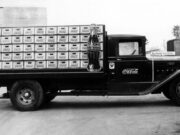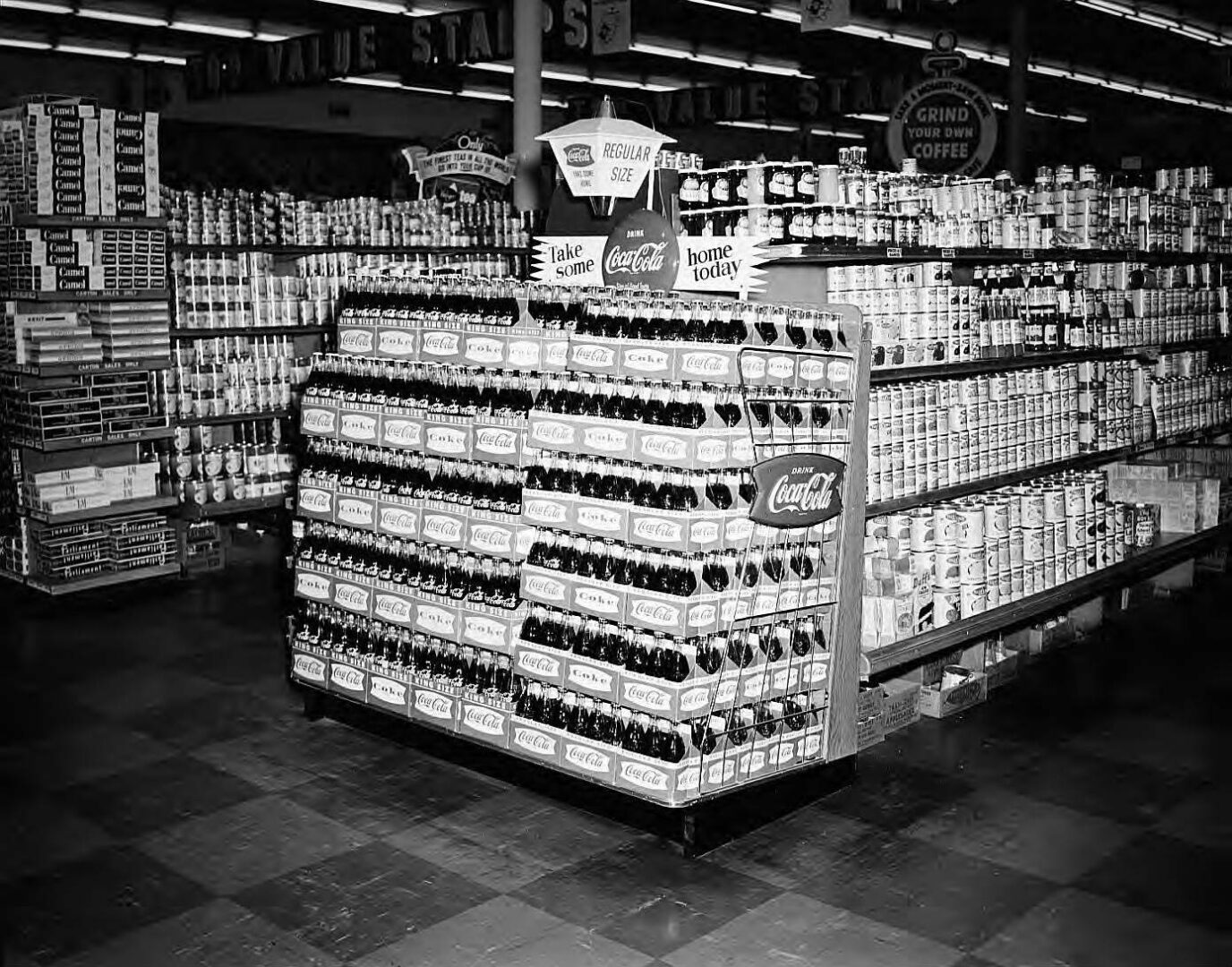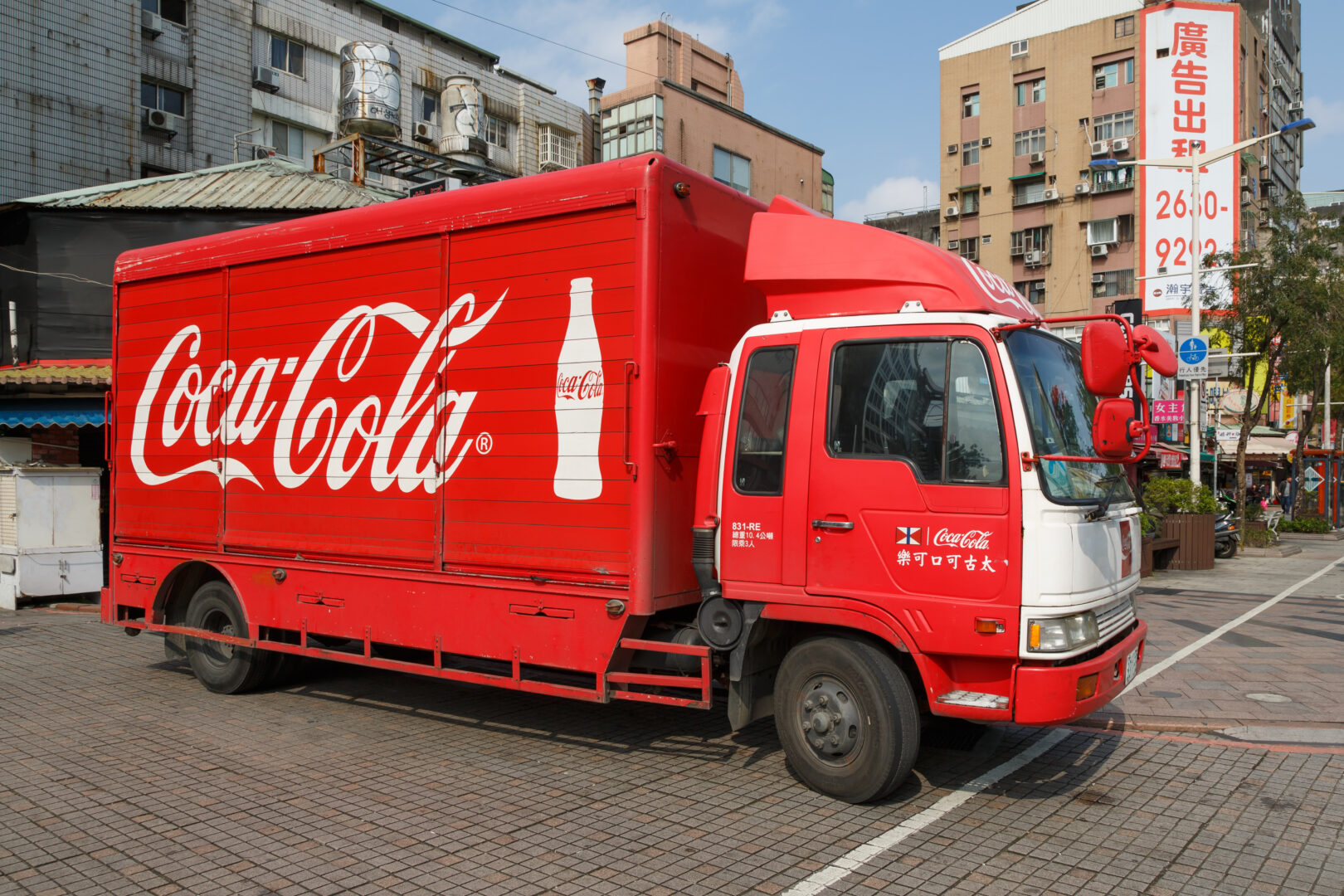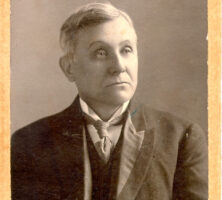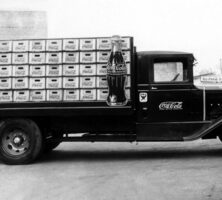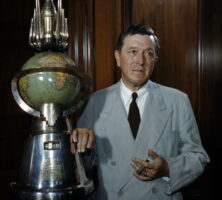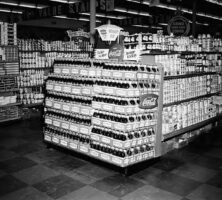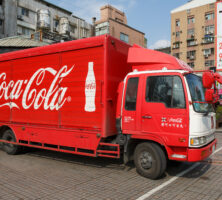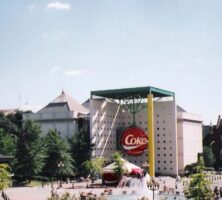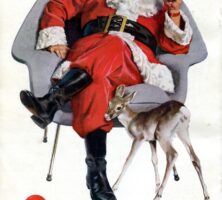The registered trademark of this multinational soft drink firm represents arguably the most widely recognized consumer product on the face of the earth. From “The Pause That Refreshes” to “Share a Coke,” the company’s advertising slogans have become as much a part of Americana as has our visual perception of the fat and jolly Santa Claus, which was first drawn by the artist Haddon Sundblom for a 1931 Coca-Cola advertisement. As the company expanded its business to global markets, particularly after World War II (1941-45), many people in Africa, Asia, Europe, and Latin America have come to associate the taste of this carbonated cola drink with American culture.
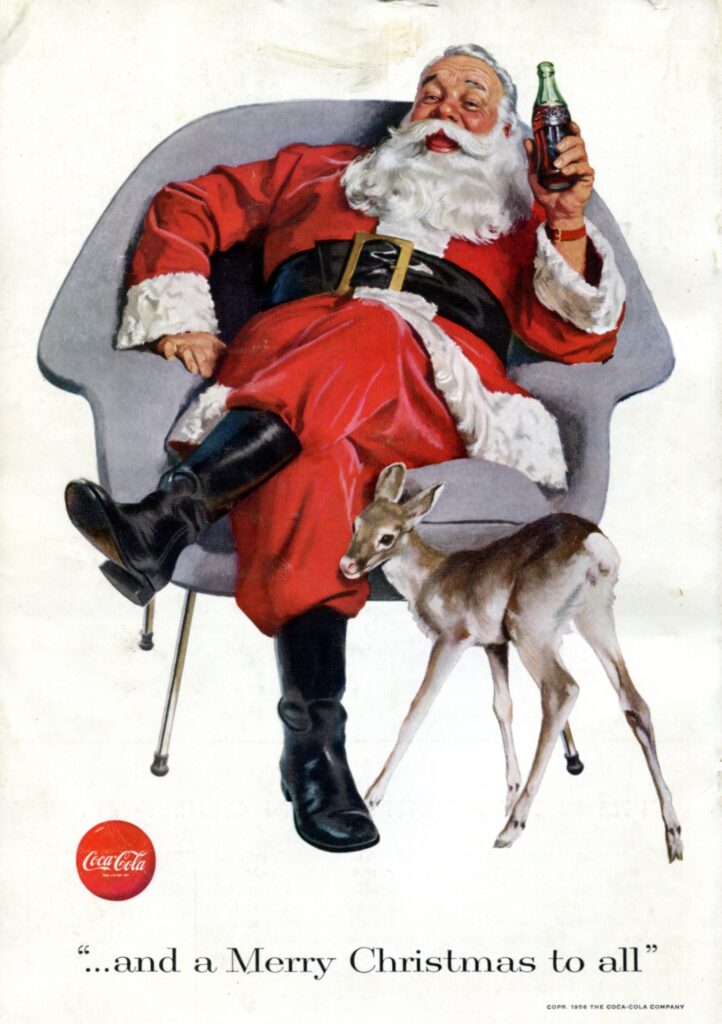
Origins
When John Stith Pemberton sold the first glass of his newly concocted drink in Atlanta’s Jacobs Pharmacy in 1886, he was entering an already established but localized market for soda fountain tonics that promised health benefits of one kind or another along with refreshment. Born in tiny Knoxville, Georgia, in 1831, Pemberton had trained at a college of herbal medicine before graduating from pharmacy school in Philadelphia. He first practiced his trade in Oglethorpe before moving to Columbus, where he operated as a druggist for fourteen years with various partners. After relocating to Atlanta in 1869, Pemberton began to experiment extensively with extracts of the coca leaf and kola nut, initially marketing a moderately successful health drink called “French Wine Coca.”
One of Pemberton’s four partners, Frank M. Robinson, coined and trademarked the name Coca-Cola, derived from its central ingredients. He also registered the product’s famous script logo, and a marketing phenomenon was born. From that moment a mystique over the supposed “secret formula” of Coca-Cola embodied in the aptly named “Merchandise 7X” has remained. The original beverage contained cocaine, an alkaloid extracted from the coca leaf, until the formula was changed before the passage of the Pure Food and Drugs Act in 1906. The official position of the firm, however, is that the drink does not and has never contained the drug. Meanwhile, company attorneys have fought aggressively in the courts to protect trademarks and ensure Coke’s identity.
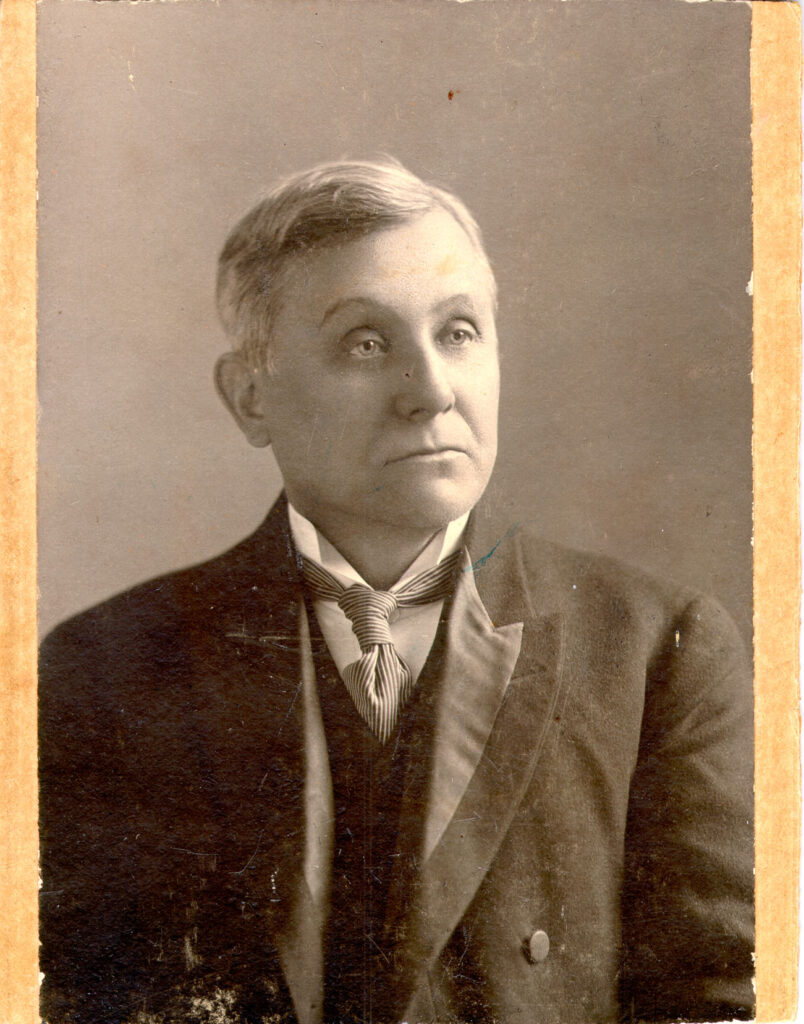
Pemberton’s small company grew rapidly after it was acquired by Asa Griggs Candler between 1889 and 1891. Candler, a successful druggist and businessman, outlined the company’s basic strategy—the manufacture and distribution of Coca-Cola syrup to be mixed with carbonated water at the soda fountain.
A staunch Methodist whose brother was a church bishop, Candler successfully marketed the nonalcoholic beverage as a “temperance drink,” but he did not see beyond the drugstore fountain. In an astounding deal negotiated in 1899, two lawyers in Chattanooga, Tennessee—Benjamin Franklin Thomas and Joseph Brown Whitehead—obtained the rights to bottle Coca-Cola throughout the United States except in Mississippi, where Joseph A. Biedenharn of Vicksburg had obtained rights in 1894. When Thomas and Whitehead undertook to grant exclusive rights to other bottlers, the term parent bottler emerged to designate large regional bottlers. These parent bottlers in turn granted franchises to thousands of smaller, independently licensed franchises all over the United States.
Independent Coca-Cola bottlers soon became established in small and middle-sized towns throughout America; most of them also became very wealthy. In Georgia a number of prominent families made their fortunes as franchised Coca-Cola bottlers, including the Barrons of Rome, the Cobbs of LaGrange and West Point, the Haleys of Albany, the Montgomerys of Atlanta, the Robertses of Columbus, and the Samses of Athens. To better coordinate relations with and between the franchised bottlers, the parent company established the Coca-Cola Bottlers Association in Atlanta in 1914. Two years later Coca-Cola introduced the distinctive “hobbleskirt” bottle as the standard package for use by its franchisees. This contoured bottle has become a well-known symbol for the beverage and serves to further distinguish the “real thing” from its imitators.
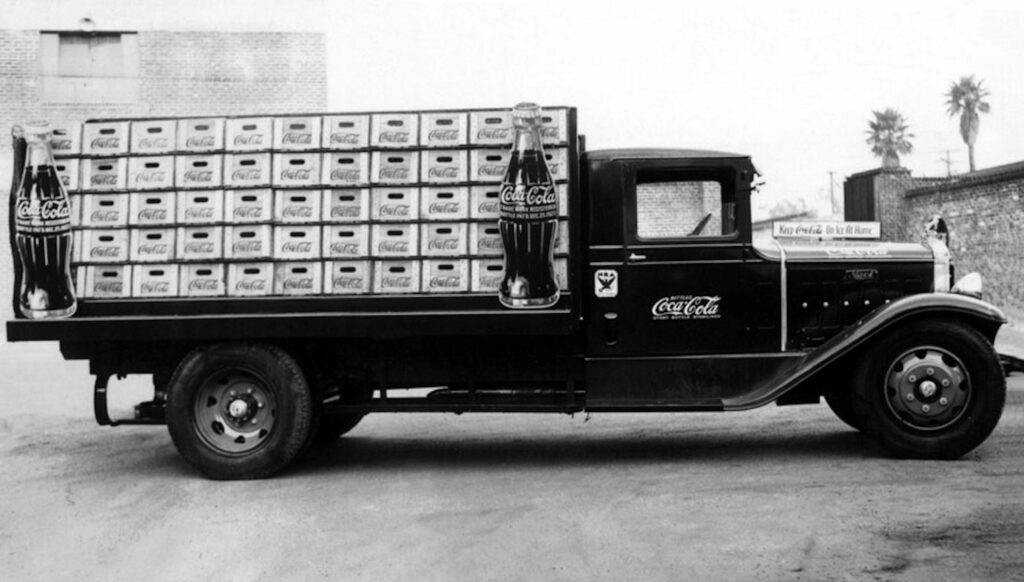
Foreign Operations
Significant growth internationally had to await the change in ownership and control that accompanied the Candler interests’ sale of the firm for $25 million to a consortium headed by Atlanta businessman Ernest Woodruff in 1919. Prominent Columbus businessman W. C. Bradley played a critical financial role in the group, serving as board chairman until 1939 and chairman of its advisory committee until 1946. The Bradley family remains a prominent force in Columbus today through its many business interests and the philanthropy of the Bradley-Turner Foundation. In 1923 Ernest Woodruff’s son Robert Woodruff became president and the eventual architect of Coke’s worldwide expansion. Key steps included the formation of the Coca-Cola Export Corporation in 1930 and the World War II pledge to provide a Coca-Cola for five cents to every American serviceperson, wherever he or she might be stationed. This brilliant business strategy and patriotic gesture provided the Coca-Cola Company with worldwide bottling plants and a business infrastructure poised to go forward at the end of the war.
The company has always had success creating partnerships with local franchised bottlers, but a recent trend to expand the number of company-owned bottling plants abroad mirrors changes in distribution strategies at home. As supermarket sales and regional distribution have come to dominate the beverage industry, the number of local bottlers has waned. The parent firm in 1986 formed a wholly owned subsidiary, Coca-Cola Enterprises, as a vehicle for acquiring a larger share of bottling operations domestically and later overseas.
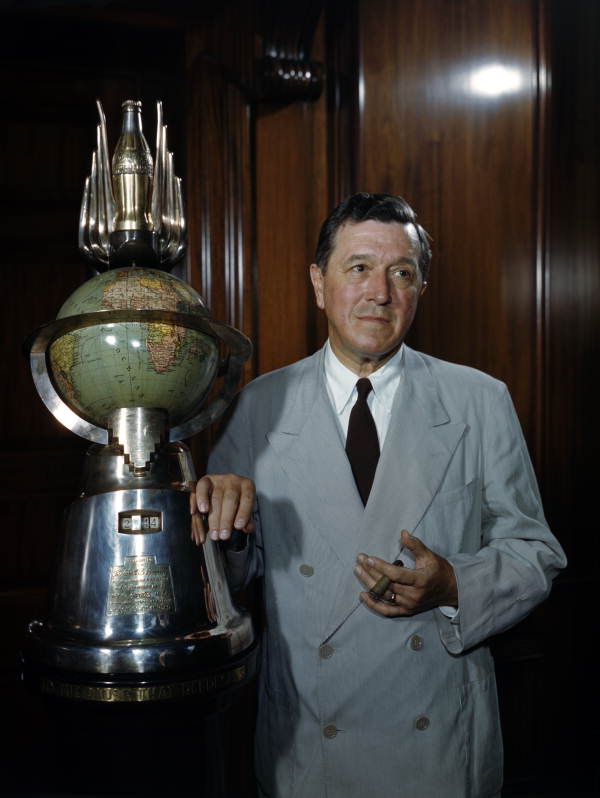
Coca-Cola Today
As the world’s largest manufacturer, distributor, and marketer of nonalcoholic beverage concentrates and syrups, operating in more than 200 countries, the firm supplies many products in addition to its flagship brand. These include fruit-based and other carbonated beverages tailored to local tastes as well as newer variants of the main brand, such as Diet, Cherry, and Vanilla Coke. Although the company did experiment with diversification in recent decades (for example, motion pictures, coffee, and wine), current corporate strategy has emphasized the nonalcoholic beverage market. Despite supply chain disruptions and record-high inflation following the COVID-19 pandemic, the Coca-Cola Company saw 11% growth in revenue in 2022 as it raised prices for beverages.
The Coca-Cola Company and the individuals associated with its history have left a lasting imprint on the face of Georgia. Emory University in Atlanta has benefited immensely from the philanthropy of both the Candlers and the Woodruffs, and the company has long been at the forefront in sponsoring the arts and civic affairs. Robert W. Woodruff, who remained a power within the corporate leadership of the company up until his death in 1985 at age ninety-five, had been called “Mr. Anonymous” because of the millions of dollars he contributed quietly to a host of causes. The Robert W. Woodruff Memorial Arts Center in Atlanta is perhaps the most recognized monument to his philanthropy. Woodruff’s handpicked successor, Roberto Goizueta, who steered the company to corporate success, is also noteworthy for his charitable contributions.
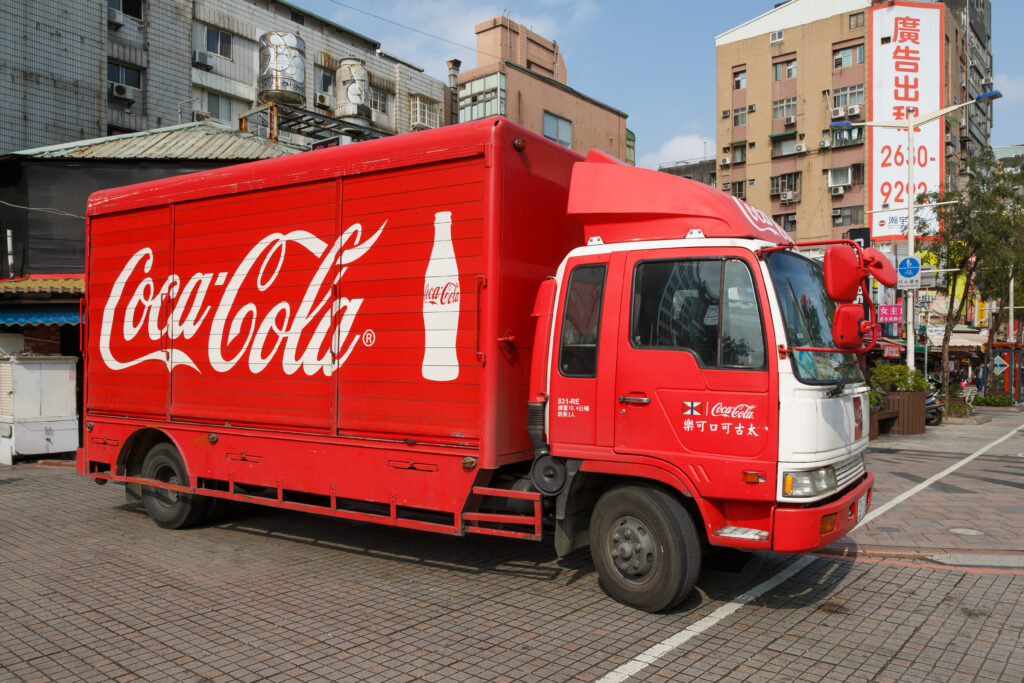
Just after Woodruff’s death in 1985, Coca-Cola embarked on one of the most famous marketing blunders in the history of American business. Concerned by taste tests that suggested a growing preference among the young for the sweetness of archrival Pepsi-Cola, management announced a change in the formula of its main brand. Ensuing protests and torrents of negative publicity greeted “New Coke” and resulted in the decision to reverse policy and retain “Classic Coke.” The company weathered the storm to emerge even stronger in the 1990s and by the early twenty-first century had reestablished itself as the pacesetter in the nonalcoholic beverage industry.
The company in 1990 opened the World of Coca-Cola in Atlanta. This popular museum served the company well while retelling one of Georgia’s most famous success stories to thousands of daily visitors. In 2007 the museum moved to a larger facility featuring new exhibits and artifacts, as well as a statue of John Pemberton. It is located near other attractions in downtown Atlanta, including Centennial Olympic Park, the CNN Center, and the Georgia Aquarium.
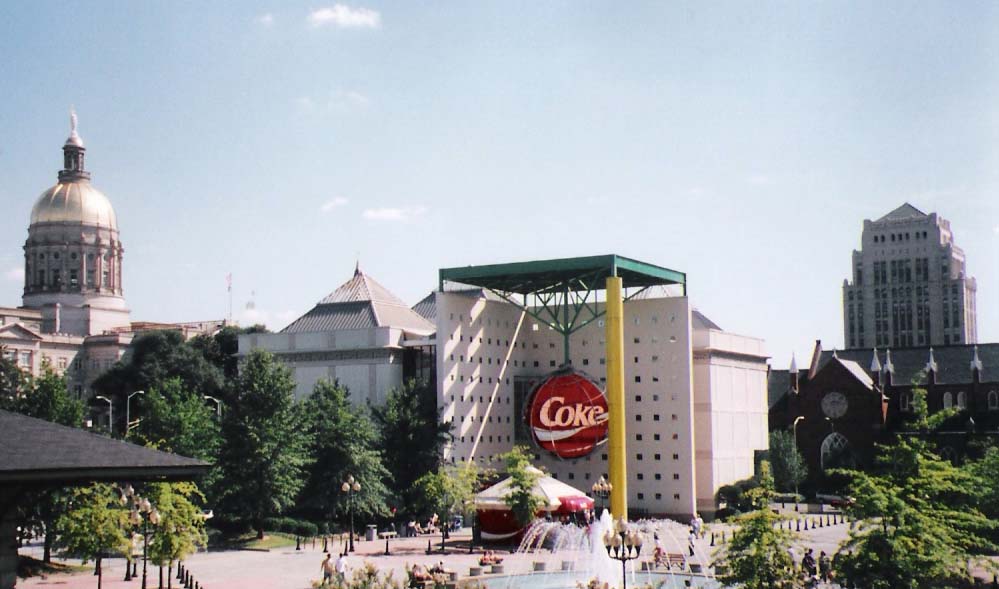
Several new varieties of Coke were introduced early in the twenty-first century. In 2004 the company launched C2, a low-carbohydrate cola, and Full Throttle, an energy drink. The following year Coca-Cola with Lime; Coca-Cola Zero, a no-calorie beverage; and a sugar-free version of Full Throttle debuted. In 2006 Black Cherry Vanilla Coke, both regular and diet; Vault and Vault Zero energy sodas; and Coca-Cola Blak, a coffee-cola combination, entered the marketplace.
In his 2005 best-seller, A History of the World in Six Glasses, social historian Tom Standage includes Coca-Cola as one of six beverages, along with beer, wine, spirits, coffee, and tea, that have shaped different eras in world history. He singles out Coke to represent the globalization of U.S. business and industry in the twentieth century and chronicles its role as an international symbol of freedom during the cold war.
In 2007 Coca-Cola acquired Glaceau, a beverage company that produces flavored and vitamin-enhanced water.


